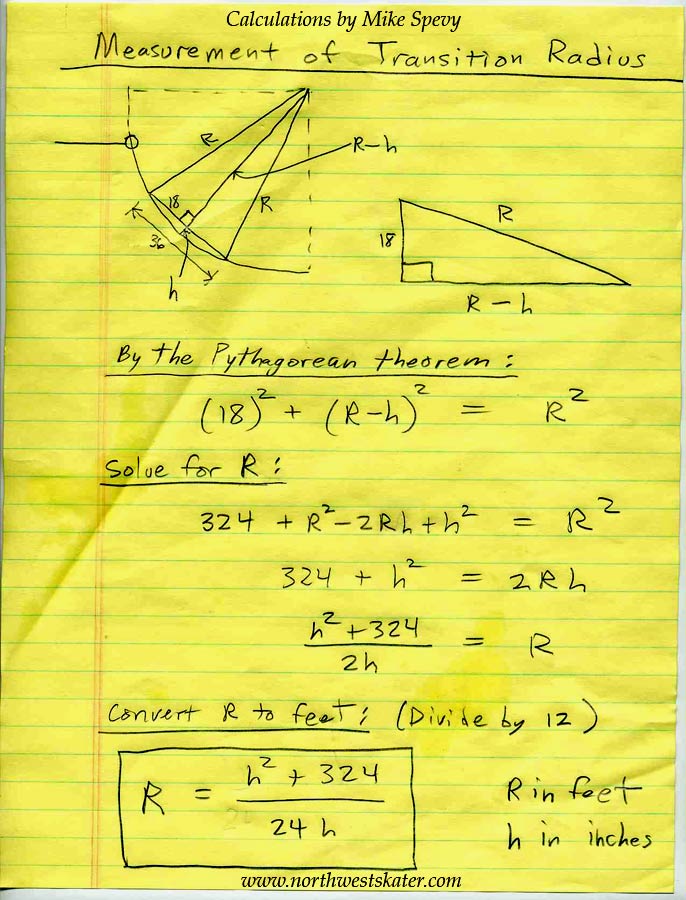Bowls and ramps have curved surfaces that are large or small. We call them trannies, Mathematicians call them radius. Often you might hear us ask, "What's the tranny in this bowl?"
Now we have a way to figure that out, thanks to Mike Spevy.
Now most people probably don't think that skateboarders are smart enough to understand the math behind what makes these curves. And they are right. I don't really understand the math completely. But, I do understand the feeling and effects of riding different sized transitions, as any skateboarder does. Sometimes I'm curious what the transition radius truly is. What the depth of a bowl truly is. Now, we can answer these questions with a simple yardstick measurement.

Mike wrote:
The following
table lists ordered pairs of h values with their corresponding R values:
( h ---- R )
...............
(3 1/2 in ---- 4ft)
(2 3/4 in ---- 5ft)
(2 1/4 in ---- 6ft)
(1 15/16 in ---- 7ft)
(1 11/16 in ---- 8ft)
(1 1/2 in ---- 9ft)
(1 5/16 in ---- 10ft)
As you can see, calculating R exactly to the foot requires measuring h to 1/16 of an inch
at times. That could be tough. If the yard stick bends even a tiny bit, calculations of R could
be way off by maybe almost 1/2 foot. With this accurate of h measurements needed, your skate
would have to be perfectly straight to use it as the ruler. One thing that could simplify taking
h measurements would be to round off h values to the nearest 1/8 inch, then just say, "Well,
that's approximately a 7ft, 8ft or 10ft tranny."
Anyhow, all we need is this chart. No formulas, equations, geometry lessons or calculators
needed at the skate park. Hope I've been some help.
Mike Spevy

